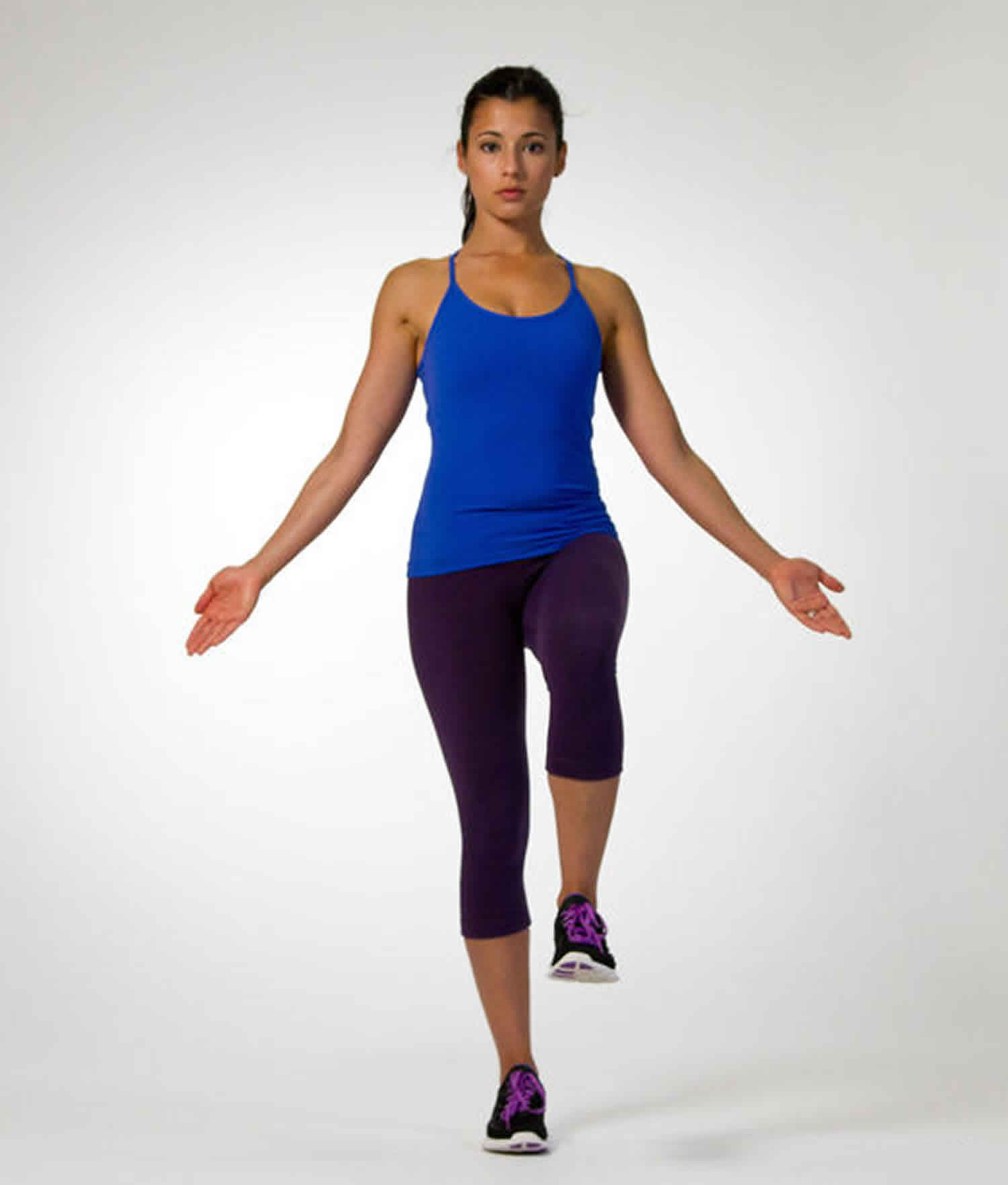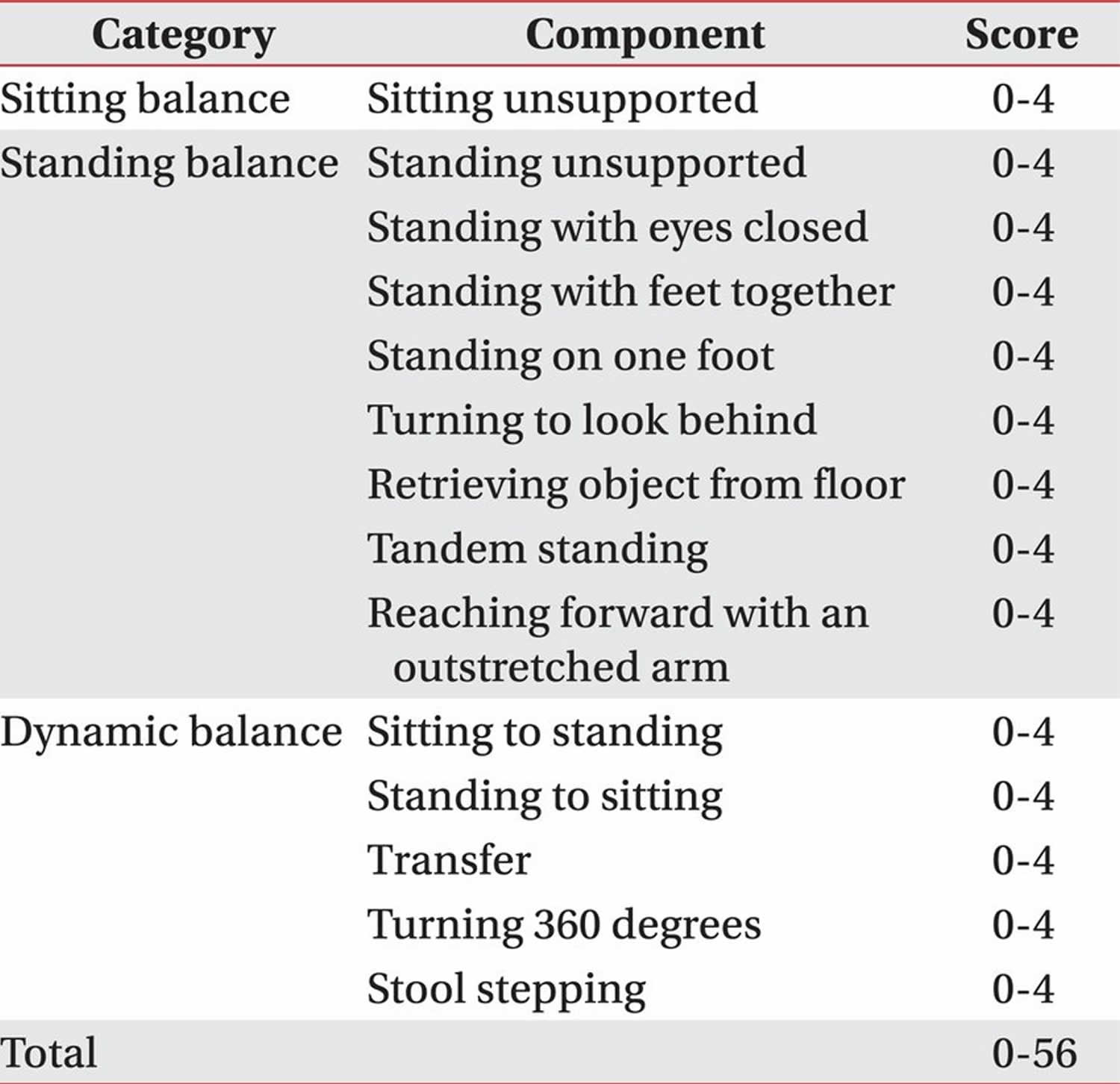Berg balance test
Berg balance scale (BBS) is used to objectively determine an elderly patient and patients with an acute stroke ability (or inability) to safely balance during a series of predetermined tasks 1. The Berg balance scale is intended to measure a subject’s ability to maintain balance while doing functional tasks 2. Berg balance test is based on the principle that a person’s balance is challenged by diminishing his/her base of support 3. The Berg balance test includes fourteen items that are common in everyday life. These tasks progress from sitting to comfortable standing, to tandem standing, and to single leg standing. Each item of the Berg balance scale is rated on a 5-point scale.
The Berg balance scale assesses the static and dynamic balances by using usual tasks, such as reach, standing position, and transferences 4. Berg balance scale is a 14 item list with each item consisting of a five-point ordinal scale ranging from 0 to 4, with 0 indicating the lowest level of function and 4 the highest level of function and takes approximately 20 minutes to complete. It does not include the assessment of gait. The Berg balance score was also developed for older people, in whom a score higher than 45 was related to a low risk of fall history 5. However, a recent study showed that a change of eight points is required to reveal a clinically significant change in function among older people who are dependent in activities of daily living 6. The Berg balance scale is easy to use and can be performed in only 10 to 15 minutes, but uncertainty between two close scores is frequent. It has also been then validated for vestibular and poststroke patients who can walk independently 7, although with poor sensitivity 6. The inter-rater reliability of the Berg Balance Scale is excellent but its sensitivity is poor to moderate 1.
General instructions for completing the Berg balance scale
Please document each task and/or give instructions as written. When scoring, please record the lowest response category that applies for each item.
In most items, the subject is asked to maintain a given position for a specific time. Progressively more points are deducted if:
- the time or distance requirements are not met
- the subject’s performance warrants supervision
- the subject touches an external support or receives assistance from the examiner
The subject should understand that they must maintain their balance while attempting the tasks. The choices of which leg to stand on or how far to reach are left to the subject. Poor judgment will adversely influence the performance and the scoring.
Equipment required for testing is a stopwatch or watch with a second hand, and a ruler or other indicator of 2, 5, and 10 inches. Chairs used during testing should be a reasonable height. Either a step or a stool of average step height may be used for item number 12 (placing alternate foot on stool or stepping).
Figure 1. Berg balance test scale scoring
[Source 8 ]Berg balance scale interpretation
Cut-off scores for the elderly were reported by Berg et al 1992 9 as follows :
- A score of 56 indicates functional balance.
- A score of < 45 indicates individuals may be at greater risk of falling.
It has been reported more recently that in the elderly population a change of 4 points is needed to be 95% confident that true change has occurred if a patient scores within 45–56 initially, 5 points if they score within 35–44, 7 points if they score within 25–34 and, finally, 5 points if their initial score is within 0–24 on the Berg Balance Scale 10.
- The Balance Scale: reliability assessment with elderly residents and patients with an acute stroke. Scand J Rehabil Med. 1995 Mar;27(1):27-36.[↩][↩]
- Berg KO, Wood-Dauphinee SL, Williams JI, Gayton D. Measuring balance in the elderly: preliminary development of an instrument. Physiotherapy Canada 1989; 41: 304-311.[↩]
- Berg KO, Maki BE, Williams JI, Holliday PJ, Wood-Dauphinee SL. Clinical and laboratory measures of postural balance in an elderly population. Arch Phys Med Rehabil 1992; 73: 1073-1080[↩]
- Aydog E, Depedibi R, Bal A, Ekşioglu E, Unlü E, Cakci A. Dynamic postural balance in ankylosing spondylitis patients. Rheumatology 2006; 45: 445-448[↩]
- Conradsson M, Lundin-Olsson L, Lindelof N, Littbrand H, Malmqvist L, Gustafson Y, Rosendahl E. Berg balance scale: intrarater test-retest reliability among older people dependent in activities of daily living and living in residential care facilities. Phys.Ther. 2007;87:1155–1163.[↩]
- Yelnik A, Bonan I. Clinical tools for assessing balance disorders. Neurophysiol.Clin. 2008;38:439–445.[↩][↩]
- Berg K, Wood-Dauphinee S, Williams JI. The Balance Scale: reliability assessment with elderly residents and patients with an acute stroke. Scand.J.Rehabil.Med. 1995;27:27–36.[↩]
- Han, Jun & Kim, Jong & Kim, Shin & Chung, Jin & Lee, Hyun-Cheol & Lim, Jae & Lee, Jiwon & Park, Kawn. (2012). Therapeutic Effects of Mechanical Horseback Riding on Gait and Balance Ability in Stroke Patients. Annals of rehabilitation medicine. 36. 762-9. 10.5535/arm.2012.36.6.762.[↩]
- Berg KO, Wood-Dauphinee SL, Williams JI, Maki B. Measuring balance in the elderly: validation of an instrument. Can.J.Public Health. 1992;83(Suppl 2):S7–11.[↩]
- Donoghue, D. and Stokes, E.K., (2009). How much change is true change? The minimum detectablefckLRchange of the Berg Balance Scale in elderly people. Journal of Rehabilitation Medicine, 41(5), pp.343-346.[↩]






